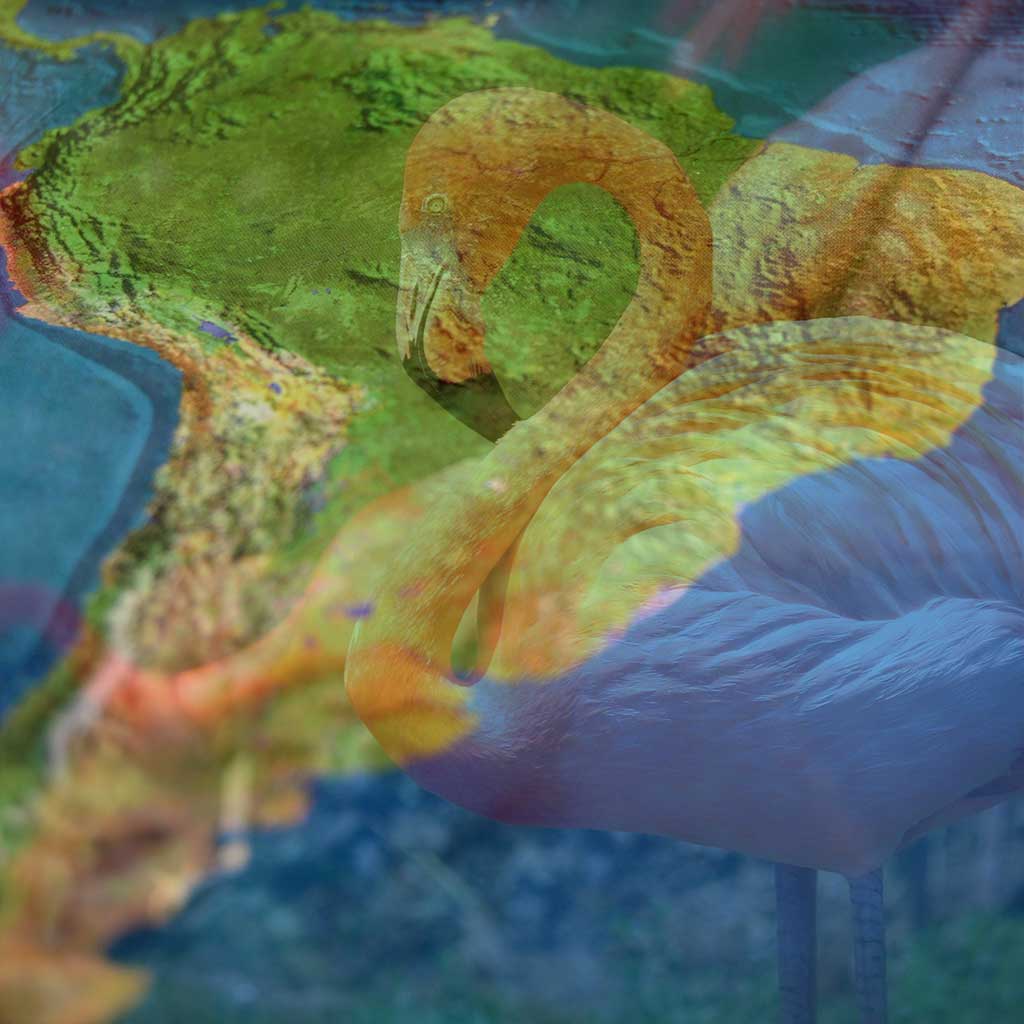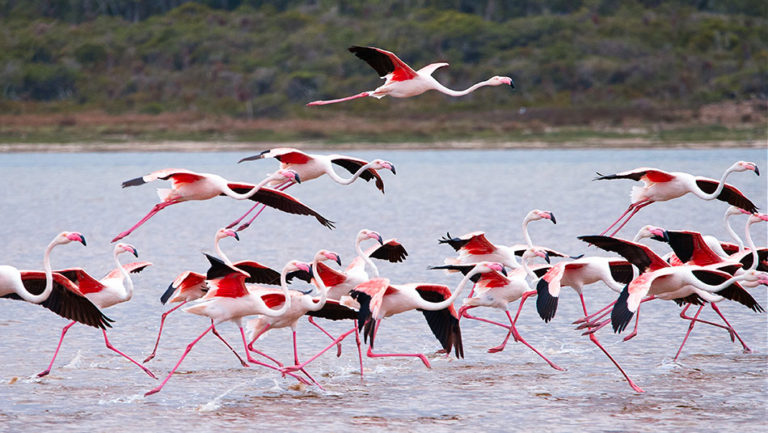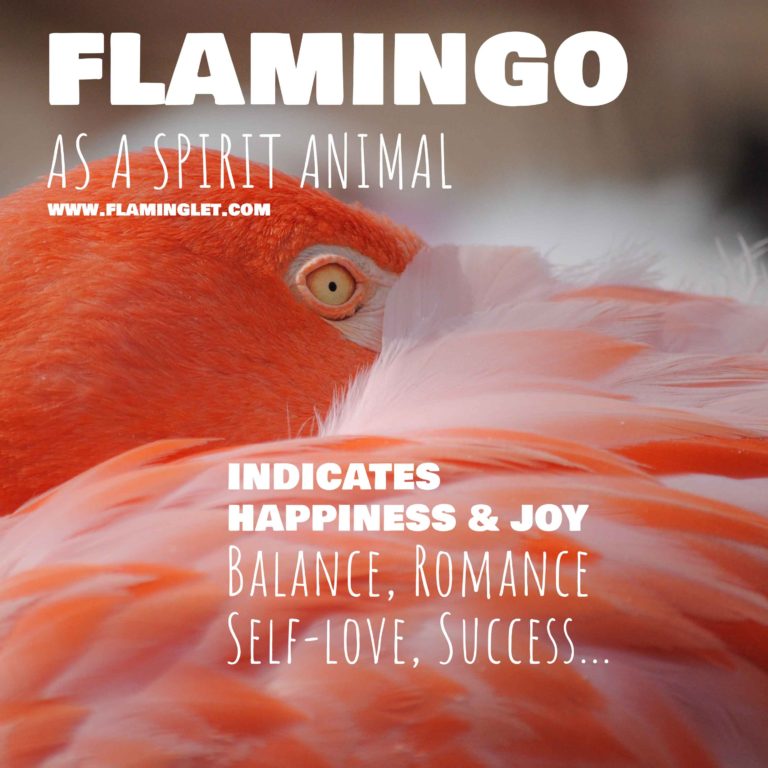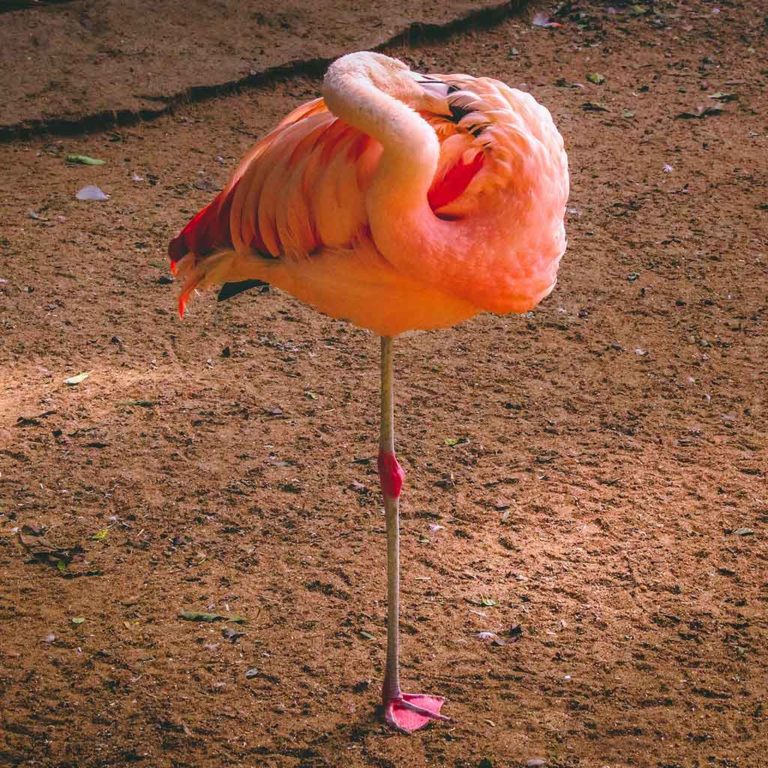Where to See Flamingos in South America?
Imagine a flock of flamingos standing on one leg or performing a particular mating march — what a view that would be.
So my curiosity rose. If I am to embark on birding travel to see flamingos in South America, where should I go? I did a research and here are a few interesting findings.
One can spot flamingos from Central-east Argentina and the Andean Region of northern Chile; along the north coasts of Colombia and Venezuela, to the Galapagos Islands.
Before the findings, I was convinced that flamingos could live only in warm climates. On my great surprise I found that some flamingos can be spotted at the altitude of only 8500 feet, others at an elevation of 12, 000 feet and the bulk of the population live at altitudes between 14,000 and 16,500 feet.
Flamingo Research Expedition
There are almost 34,000 Andean Flamingos and more than 100, 000 Puna Flamingos in South America. These nomadic gregarious Flamingo birds live in contrasting habitats and two different wetland system, at high altitude in North-western Argentina, and low altitudes, at only 84 m.a.s.l.
The geographical distribution of Flamingo is associated with food availability and water quality. While some flamingo species are habitat to lower temperatures areas and higher oxygen, others are present in areas with higher temperatures.
The birds’ preferred habitats include hypersaline lakes, caustic water lagoons, and alkaline volcanic lakes.
During winter, lowland wetlands have similar climatic conditions to high Andes sites, with temperature 0C during the day and -7C during nights.
Now, do to the rough terrain in some places, in a few places where flamingos live, such as the long strips of belts of salty slime of uncertain depth, these places cannot be visited by people. But there are other places where one can easily observe these beautiful birds from a distance. Here is what the expediters discovered.
To analyze flamingo habitat, and to understand their behavior, many years ago, a group of researchers went on a flamingo expedition. Their expedition trip study area, comprised two wetlands systems in different places of the high Andes in Argentina. Both sites, endorheic basins, hyper-salty or salty.
During this expedition, the researches recorded the behavior of Andean flamingos, at least over 100 individuals at random. Here are their findings.
Flamingos are nomadic and inhabit at habitats with high seasonal fluctuation in conditions and resources. In South America, the birds were found on the salt lakes and certain lakes of relatively fresh water from the extreme south of Salar de Atacama to Lago Parinacota in the cordilleras of Arica. Their nesting points are found on two spots, on Salar de Atacama, and in the province of Tarapaca at Salar de Coposa, Salar de Huasco, Lago Parinacota (where Phoenicoparrus jamesi was originally found in 1850).
How Many Flamingo Species Lives in South America?
Out of six, three flamingo species are the habitats of South America. Phoenicoparrus Andinus, Phoenicoparrus Jamesi, and Phoenicopterus Chilensis.
Vilamaa Lake
At Vilama lake, located over 4,500 m, in Central Andes at Northwest Argentina, it is the place where one can spot thousands of flamingos.
Sited in the extreme northwest of Argentina, Vilama climate is cold and dry, high solar radiation, great daily temperature amplitude, strong winds. (1)
Melincue
The other site, Melincue, is in Central-east Argentina. Here, the climate is temperate and wet. The annual average temperature is 16C. Both places are used by flamingos alternatively during their yearly cycle, Andean sites during the breeding season, and lowlands during the non-breeding season (June-September).
Flamingos can be seen in these two spots in abundance, especially Andean flamingos. The highest total abundances are in August and February, in Melincue and Vilama respectively. Puna flamingos are spotted only at the Andean site. No Puna flamingos were observed in Melincue. Andean flamingo showed significant numbers at summer and winter sites.
The two rarest flamingo species in the world, are Andean and Puna flamingos (Phoenicoparrus andinus and P. jamesi), and they live in wetlands at central Andes and lowlands in Argentina, and similar habitats in Bolivia, Chile, and Perú. Andean and Puna flamingos coexist in high Andes wetlands, and they use wetlands with the location in Central Andes and lowland in Argentina, Bolivia, Chile, and Peru.
The Lake Laguna Colorada
Laguna Colorado is a shallow salt lake in Bolivia, situated in an uninhabited section of southwestern Bolivia, at an altitude of 14,800 feet.
At the northeast corner of the lake Laguna Colorada, in an area with thin air and intense, relentless wind, a series of hot springs are found. These hot springs are of volcanic origin where they pour their waters into those of the lake. The temperature is 22C during the day and night. Meaning, when the temperatures drop to -20C and when the lake freezes, the Andean flamingos move to the northeast corner where the water never freezes, and they stay there all through the winter.
Within this colony, all three species of volcano flamingo—the Chilean, Andean, and, the elusive James’s exist.
Breeding period: December-February
Laguna Colorada (three species): 5,937 chicks of mixed species were produced. At Laguna Colorada hundreds of flamingo eggs can be seen.
James Flamingo
The James’s (also known as the puna) Flamingo is the smallest of South America’s flamingos. They’re identified by both their size (3 feet high) and their little bills, which have a bright yellow coloring and black tips. James’s Flamingos tend to be pale pink with darker pink feathers on their necks and back.
James flamingo lives in the Andean Region of northern Chile, in the mountains. Here, one can spot a nesting colony of at least 40000 birds (per colony) standing in all directions and postures, or, walking and feeding. This is also the area, where James Flamingo was found originally.
Geographical area where James live in South America
Thus, James’s flamingos live in the highlands of Peru, Bolivia, and Chile with the largest colony located at Laguna Colorado. Here, you can see Chilean and Andean flamingos equally, feeding in great abundance of shallow water all over the lake.
The three species of volcano flamingos nest in common breeding colonies.
Like all flamingos, they lay a single egg atop a mud mound nest. All three species are nesting together without separation of any kind. And they do not get to mix up their eggs.
Wondering how to distinguish the eggs of one species from those of another?
Well, after some observation researchers found that those of each species were characteristic in shape. For instance, the eggs of Phoenicoparrus jamesi are significantly smaller in both dimensions, while those of Phoenicopterus chilensis are longer and tend to narrow than those of Phoenicopterus andinus.
Andean Flamingos
In the Andean wetlands, with patches of water in the middle of the desert landscape, high Andean flamingos live. They live in Central Andes and lowland in northwestern Argentina, western Bolivia, north-central Chile, and southern Peru.
The Andean flamingo are the only flamingos with yellow legs and are most closely related to James’s flamingo, which shares the same habitat.
Over their annual cycle, high Andes flamingos use the central Andes and lowland wetlands alternatively. During the breeding seasons, which is from October till March, flamingos use Andean sites. And during the non-breeding-season, Andean flamingos use lowland sites.
Chilean Flamingo
As its name suggests, the Chilean flamingo lives in Chile. It breeds in South America from Ecuador and Peru to Chile and Argentina, Bolivia and southeast to Brazil. The Chilean Flamingo (Phoenicopterus chilensis) is the most widely distributed member of the family Phoenicopteridae in South America. It is easily distinguished by their light grey legs with pink joints. More than half of their bill is black and their feather is light pink.
Phoenicopterus chilensis is the only flamingo species known from Paraguay, where it is essentially restricted to the Chaco (an arid lowland plain in western Paraguay) with most records from the saline lagoons of the central Chaco (2)
American Flamingo
In South America, the America Flamingo also lives along the northern coasts of Colombia and Venezuela as well as in the Galapagos Islands.
Flamingos in South America and the People
For people of South America, like those of the Altiplano, flamingos represent the ultimate symbols of elegance and physical beauty.



